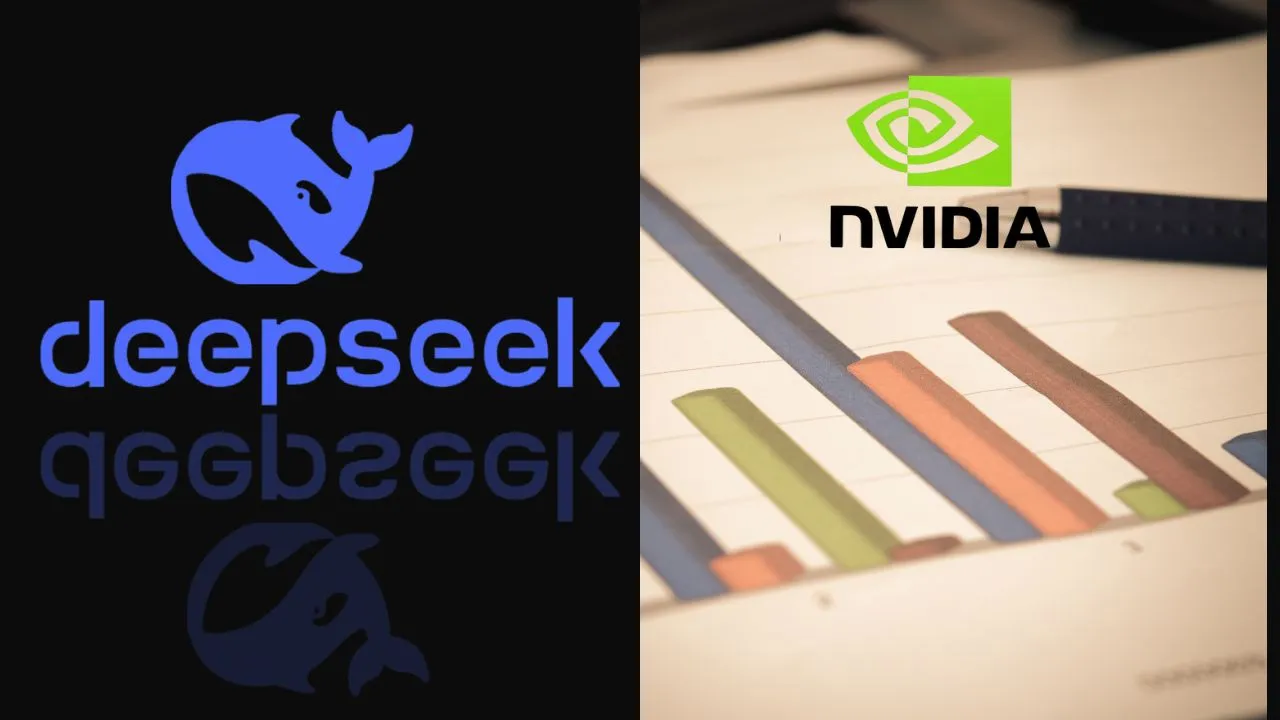Nvidia, the dominant force in AI hardware, recently experienced a significant drop in its share price following the emergence of DeepSeek AI, a Chinese AI startup that demonstrated a revolutionary approach to AI model training. This market reaction has raised several questions: Why did DeepSeek’s breakthrough lead to Nvidia’s stock decline? What does this mean for Nvidia’s business model? And how could this impact the future of the AI industry? This deep analysis will explore all the key factors behind Nvidia’s stock slump.
Table of Contents
Factor 1: DeepSeek’s Efficient AI Model Reduces Dependence on High-End Nvidia Chips
One of the most critical factors behind Nvidia’s stock decline is that DeepSeek AI achieved high-performance results using far fewer advanced GPUs than traditionally required. The standard AI training process involves thousands of Nvidia’s high-end chips, such as the A100 and H100 models, which cost between $30,000 and $40,000 each. Tech giants like OpenAI, Google, and Meta spend billions of dollars on these chips to power their AI models.
However, DeepSeek’s new AI model was reportedly trained using only 2,000 less-advanced Nvidia GPUs, costing approximately $6 million, while achieving results comparable to industry leaders. If this approach proves scalable and widely adopted, it could drastically reduce the demand for Nvidia’s most expensive chips, which have been a core driver of its revenue growth.
Factor 2: The “Mixture of Experts” Approach Challenges Nvidia’s Business Model
DeepSeek AI employs a technique called the “Mixture of Experts” (MoE), which allows AI systems to activate only the necessary portions of their model rather than using full computational power all the time. Traditional AI models, such as those from OpenAI, use all their parameters simultaneously, requiring enormous computing power.
DeepSeek’s approach uses 671 billion parameters but activates only 37 billion at a time. This means significantly lower energy consumption and computing requirements, which could reduce the overall need for Nvidia’s GPUs in large-scale AI deployments. If more AI developers adopt this method, Nvidia’s total addressable market for high-end GPUs could shrink significantly.
Factor 3: Market Panic Over AI Democratization
One of Nvidia’s key strengths has been its ability to establish a near-monopoly on high-performance AI chips. Companies like Microsoft, Google, and Meta have spent billions building AI infrastructure dependent on Nvidia’s technology. However, DeepSeek’s success suggests that AI development may no longer require the same level of capital investment in hardware.
If smaller players can build powerful AI models at a fraction of the cost, this could reduce the bargaining power of Nvidia over the AI industry. Investors saw this as a potential shift in AI infrastructure spending, leading to a sell-off of Nvidia shares as traders recalibrated their expectations for future revenue growth.
Factor 4: U.S. Export Restrictions and China’s AI Independence
The U.S. government has imposed strict export controls on Nvidia’s most advanced AI chips to prevent China from developing cutting-edge AI capabilities. However, DeepSeek’s success suggests that Chinese companies can still innovate and build competitive AI models even without access to Nvidia’s latest chips.
This development raised concerns that China could become less reliant on Nvidia in the long run, impacting Nvidia’s sales in one of the world’s largest AI markets. If Chinese firms continue to find ways to bypass these restrictions through software efficiency, Nvidia’s long-term growth prospects could be at risk.
Factor 5: Stock Market Overreliance on AI Hype
Nvidia’s meteoric rise in stock price over the past year has been fueled by the AI boom. The company’s valuation was heavily tied to expectations that AI infrastructure spending would continue at an aggressive pace. However, DeepSeek’s emergence introduced uncertainty into these projections.
Following the DeepSeek announcement, the Nasdaq technology index saw a $1 trillion loss in value, with Nvidia’s stock plunging by 17%. This massive sell-off suggests that the market had priced Nvidia’s future too optimistically, and investors were quick to react to any sign that AI development might shift away from Nvidia’s core products.
Factor 6: Competitive Pressure from New AI Paradigms
While Nvidia’s GPUs remain the industry standard, DeepSeek’s success highlights the possibility that AI models can be trained more efficiently with alternative approaches. If more companies start developing AI using similar cost-effective techniques, Nvidia’s dominance in the AI chip market could weaken.
Additionally, companies like Google and Microsoft are investing in their own AI hardware, such as Google’s TPU (Tensor Processing Unit) and Microsoft’s custom AI chips. The emergence of new competitors, combined with alternative AI development strategies, could pose long-term challenges to Nvidia’s market position.
Conclusion: Is Nvidia’s Stock Decline Temporary or Long-Term?
The drop in Nvidia’s share price following DeepSeek’s announcement highlights investor concerns about the changing AI landscape. While Nvidia remains a leader in AI hardware, the emergence of more efficient AI training methods, geopolitical tensions, and increasing competition from alternative hardware providers pose real risks to its long-term dominance.
However, Nvidia is still in a strong position due to its extensive ecosystem, cutting-edge technology, and deep integration with major AI companies. If Nvidia can adapt to these industry shifts and develop more efficient AI hardware solutions, it may continue to be a key player in the AI revolution.
In the short term, the stock decline may be a market correction from overhyped expectations. But in the long run, Nvidia will need to navigate an increasingly competitive and evolving AI landscape to maintain its leadership position.

